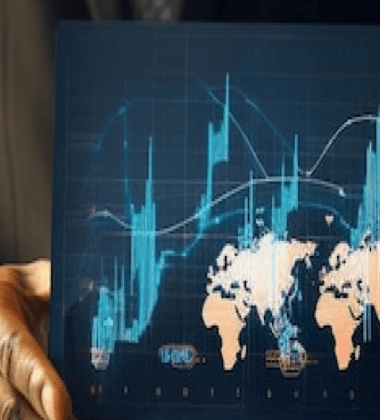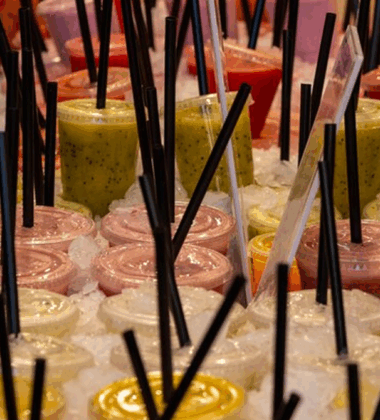A Neuroarchitecture Interior Design Guide for Exhibitors at the Global Products Expo 2025
In today’s experience-driven market, how your booth feels is just as important as how it looks. As an exhibitor at the Global Products Expo 2025, standing out means more than just a flashy display—it means creating an inclusive environment that welcomes all types of minds. By integrating neuroarchitecture interior design, you can transform your booth into a space that supports cognitive diversity, encourages engagement, and builds deeper brand connections.
This guide is your roadmap to designing an inclusive expo experience using neuroarchitecture principles—tailored for food and beverage expo exhibitors who want to connect meaningfully with every attendee.
(June 26–28, 2025, at the New Jersey Expo Center)
What Is Neuroarchitecture Interior Design?
Neuroarchitecture is the science of designing environments that positively affect the human brain. When applied to interior design, especially in public event settings like expos, neuroarchitecture can influence how people feel, behave, and interact within a space.
For exhibitors at a major food and beverage expo USA like the Global Products Expo, incorporating these design principles helps support neurodiverse visitors—including those with ADHD, autism spectrum disorder, sensory sensitivities, and anxiety—creating a booth that is not only welcoming but also unforgettable.
Why Inclusive Design Matters at Trade Shows
The Global Products Expo 2025 is expected to attract thousands of attendees, from product developers and food tech innovators to plant-based pioneers and conscious consumers. Among them will be individuals who process sensory and spatial information differently.
Ignoring neurodiversity in booth design can unintentionally alienate a portion of your audience. On the other hand, intentional inclusive design can:
- Increase dwell time at your booth
- Improve brand perception
- Generate more leads and conversations
- Set you apart as a forward-thinking, human-centered exhibitor
Key Neuroarchitecture Strategies for Inclusive Booth Design
Here are actionable Global Products Expo tips to integrate neuroarchitecture interior design into your booth setup:
1. Use Calming, Muted Color Palettes
Bold colors can be overstimulating for neurodiverse individuals. Instead, use softer hues like blues, greens, and earth tones that evoke calm and safety. Reserve strong accent colors for specific CTAs or focal points.
2. Balance Visual Complexity
Avoid cluttered visuals or overstimulating graphics. Use visual hierarchy to guide the eye naturally—from brand name to product displays to call-to-action. White space isn’t just aesthetic—it’s therapeutic for overwhelmed minds.
3. Control Sound Levels
Noise is one of the biggest sensory triggers at large expos. If possible, incorporate acoustic panels, carpeting, or fabric walls to absorb sound. Create a “quiet zone” within your booth for focused conversations.
4. Design for Movement and Flow
Neuroarchitecture emphasizes spatial logic. Allow enough room for different types of movement—slow strollers, wheelchair users, or people who need to pace. Use floor markers or lighting to intuitively guide people through your space.
5. Provide Sensory Break Opportunities
Offer tactile objects, aroma-free environments, or a small seating nook with soft lighting. These simple design choices can turn your booth into a haven amid expo chaos.
Personalization: The Future of Food and Beverage Exhibits
One of the emerging themes at this year’s expo is consumer personalization—and that includes how people experience your brand. Just as food tech is innovating to meet individual dietary needs, booth design can be personalized to respect neurological differences.
Want to show off a new plant-based product? Include visual alternatives to loud product videos—such as infographics or QR codes linking to calm, narrated explainers. Thinking about a sampling station? Consider offering textures and flavors that don’t overwhelm the senses.
When you center personalization in your design, you align with both the inclusive mission of neurodiversity and the innovation-driven spirit of the Global Products Expo.
Real-World Example: Neuroarchitecture in Action
At last year’s food and beverage expo USA, one exhibitor stood out—not for the size of their booth, but for its atmosphere. They used:
- Natural wood finishes
- Low lighting
- Noise-reducing curtains
- Clear, spaced-out signage
- A sensory-friendly seating pod with noise-canceling headphones
The result? Longer visitor engagement, increased lead conversion, and positive buzz on social media about their inclusive approach.
Top Global Products Expo Tips for Neuroinclusive Exhibitors
| Tip | Why It Matters |
| Use visuals + text for communication | Supports multiple learning styles |
| Avoid strong fragrances | Many neurodivergent attendees have scent sensitivities |
| Add “quiet hour” signage | Shows you’re aware and intentional |
| Train your team on neurodiversity | Empowers staff to engage respectfully |
Don’t Forget the Digital Experience
Neurodiverse design shouldn’t stop at the physical booth. Make sure your QR codes, landing pages, and follow-up emails are easy to read, use plain language, and avoid flashing animations.
Bonus: This also helps with general accessibility and improves conversion for all audiences—not just neurodivergent ones.
Final Thoughts: Designing for All = Winning for All
Neuroarchitecture isn’t just a trend—it’s the future of experiential marketing. At the Global Products Expo 2025, where plant-based innovation, food tech, and personalization reign supreme, exhibitors who prioritize inclusion will lead the conversation.
Whether you’re a startup or an established brand, designing with neurodiversity in mind shows you care about people, not just products. And that’s what today’s consumers remember—and reward.
Ready to Rethink Your Booth Experience?
Want help designing a neuroinclusive space for the Global Products Expo?
Let’s chat! Our team of interior designers and expo strategists can help you turn neuroarchitecture principles into a high-performing, high-converting booth.
👉 Book a free design consult today and get a personalized strategy before June 26!





